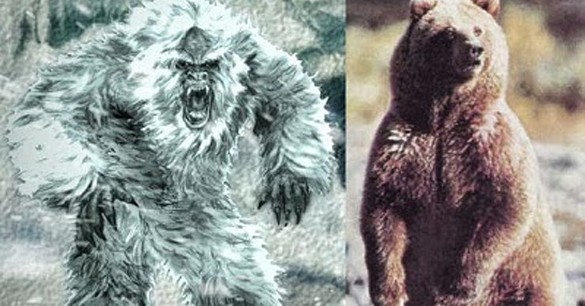Campfire legends of massive, shaggy bipeds called yetis are grounded in a less mysterious truth: bears.

Eight samples of remains such as fur, bones and teeth purportedly from mountain-dwelling yetis actually come from three different kinds of bears that live in the Himalayas, researchers report November 29 in the Proceedings of the Royal Society B. A ninth sample turned out to come from a dog.
Previous analyses of smaller fragments of “yeti” DNA yielded controversial results. The new study looks at bigger chunks of DNA, analyzing the complete mitochondrial genomes from alleged yetis and comparing them with the mitochondrial genomes of various bears, including polar bears and Tibetan brown bears.
The results also give new insight into the genetic relationships between the different bears that call the Tibetan Plateau home, which could guide efforts to protect these rare subspecies. During a period of glaciation about 660,000 years ago, Himalayan brown bears were one of the first groups to branch off and become distinct from other brown bears, the data suggest.
Tibetan brown bears, on the other hand, share a more recent common ancestor with their relatives in Eurasia and North America. They might have migrated to the area around 340,000 years ago, but were probably kept geographically isolated from Himalayan brown bears by the rugged mountain terrain.
BY LAUREL HAMERS 7:06PM, NOVEMBER 28, 2017
Hi! I am a robot. I just upvoted you! I found similar content that readers might be interested in:
https://www.sciencenews.org/blog/science-ticker/yeti-himalayan-brown-bear
Downvoting a post can decrease pending rewards and make it less visible. Common reasons:
Submit